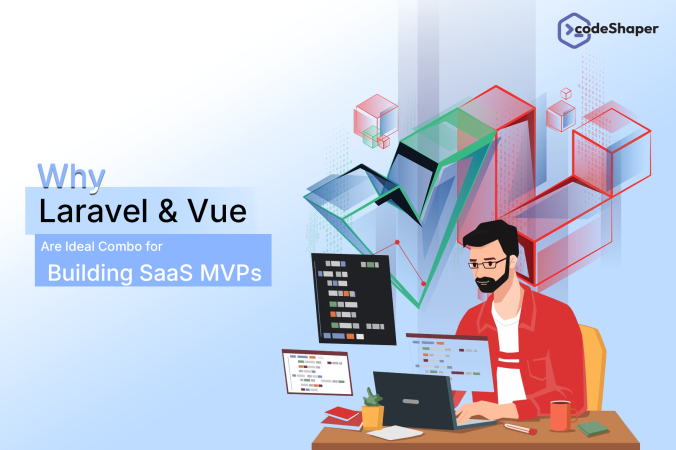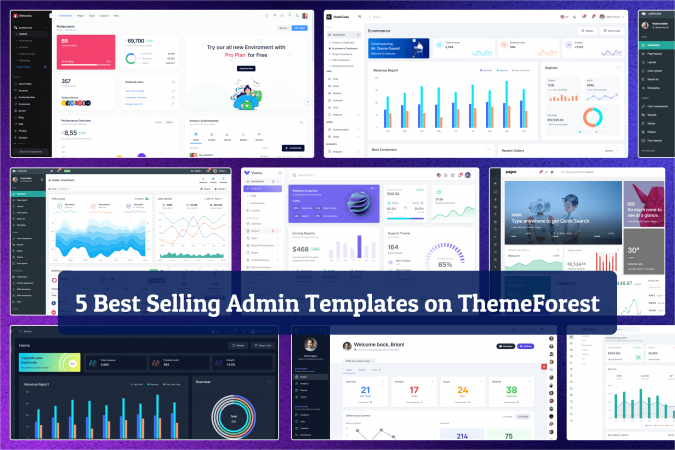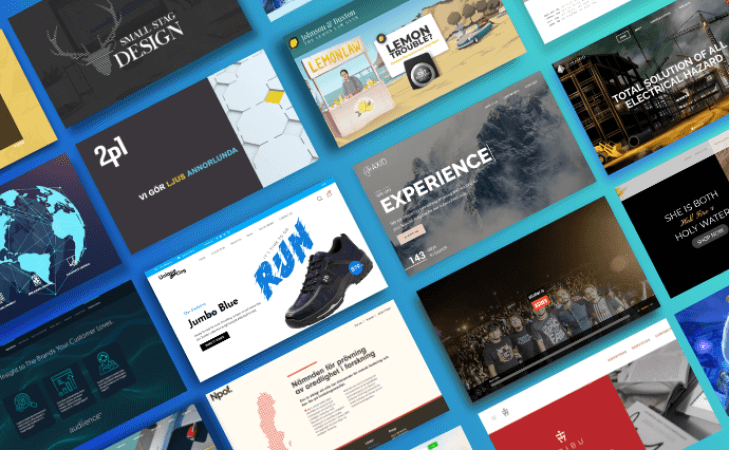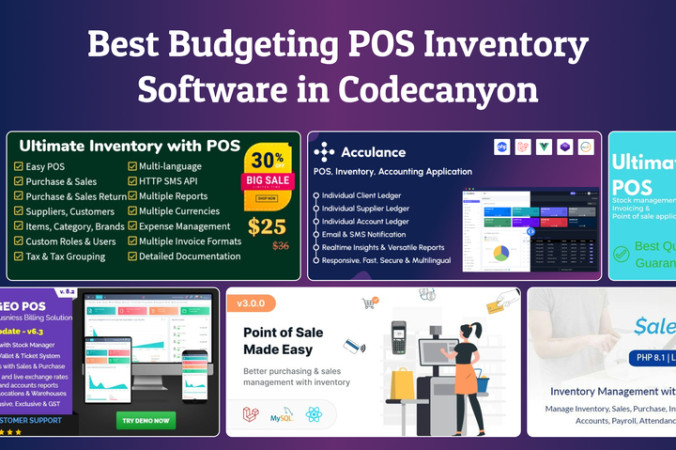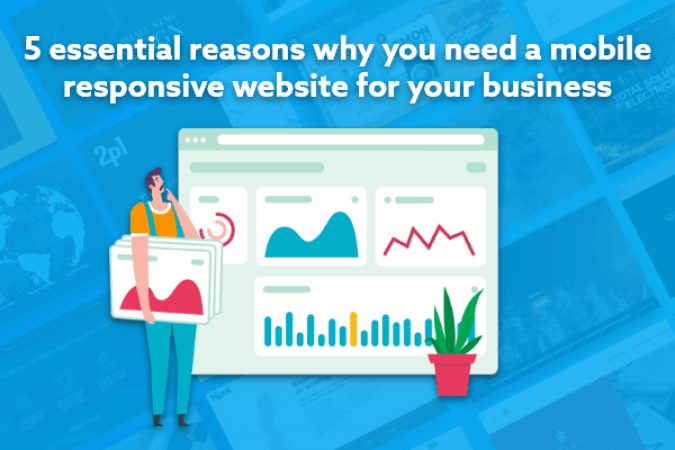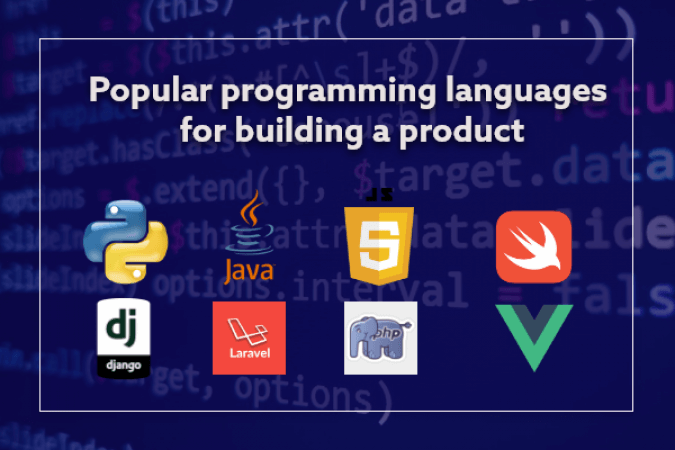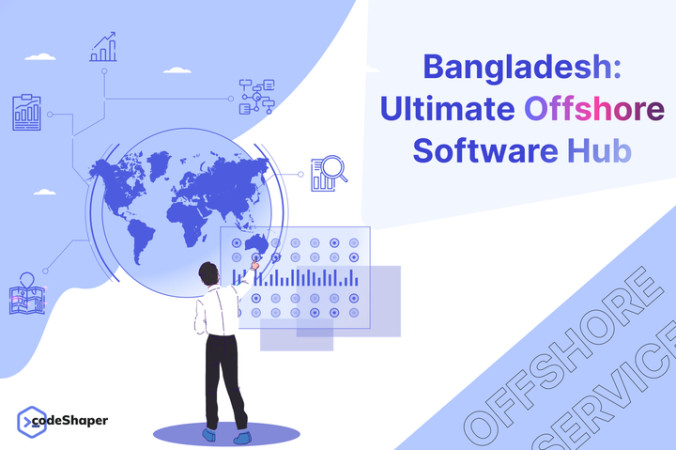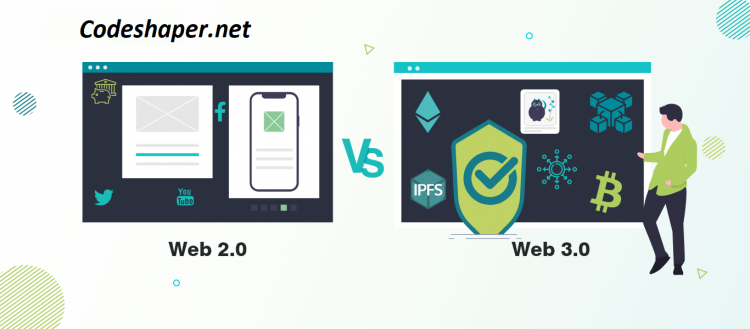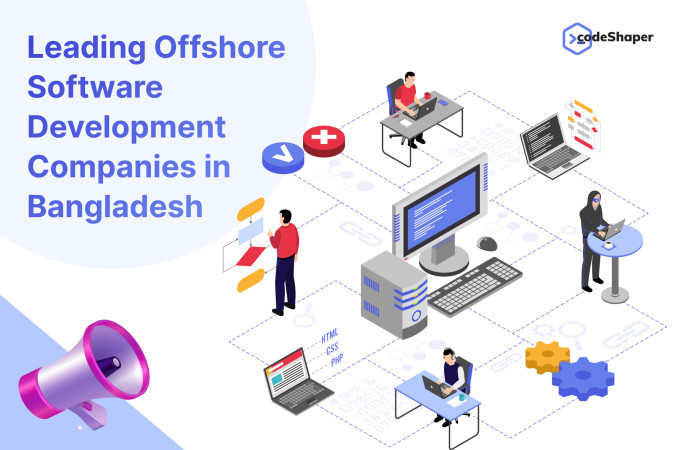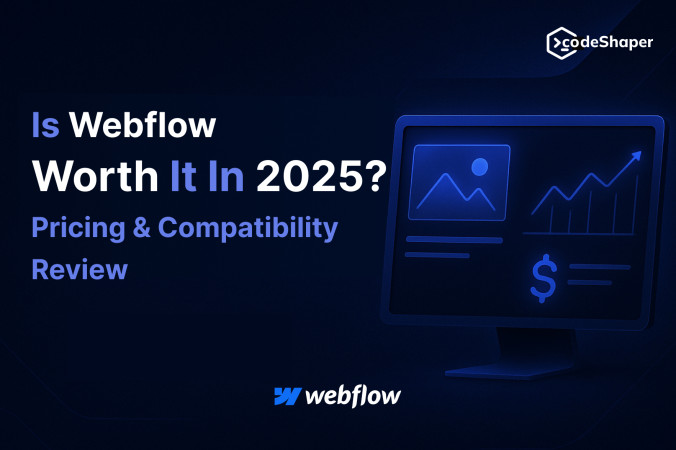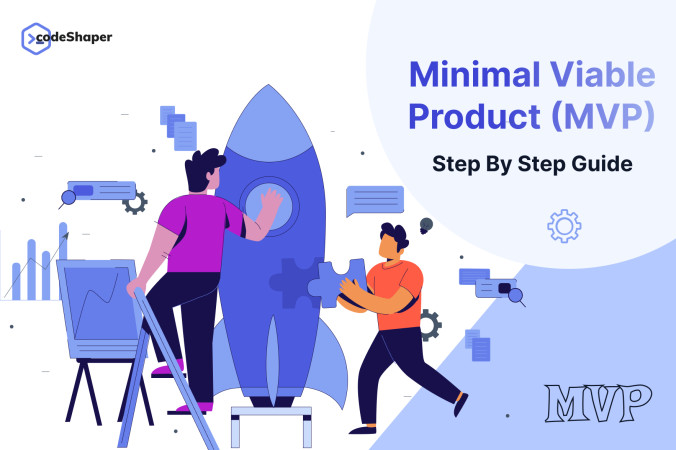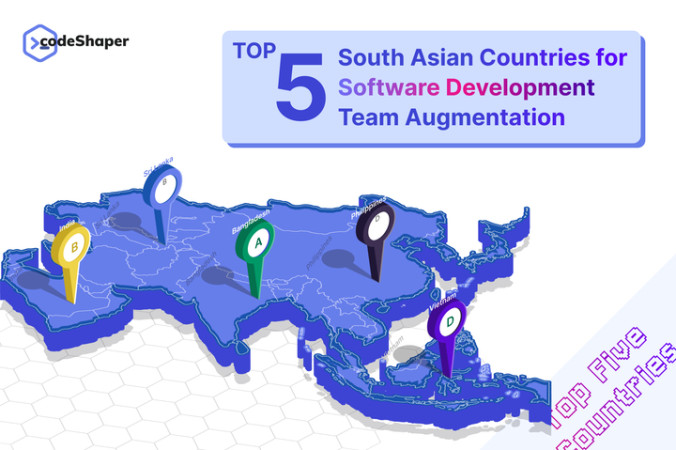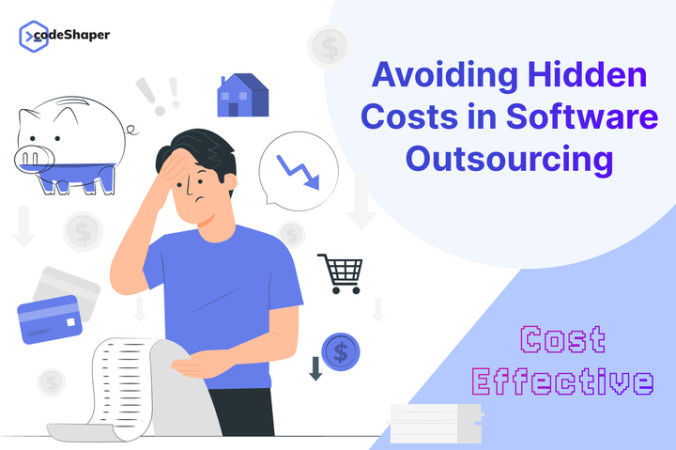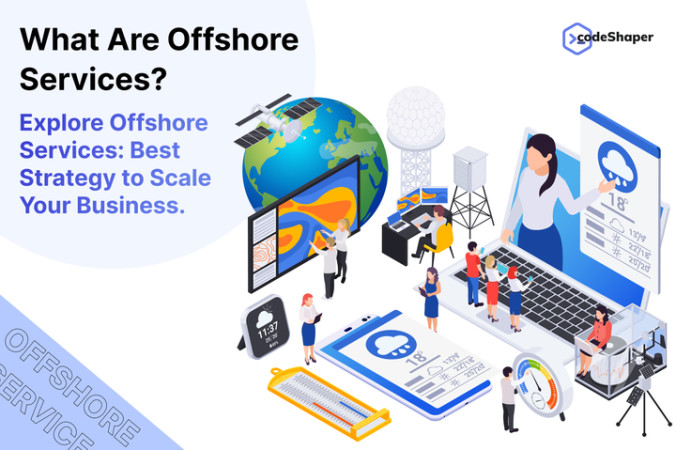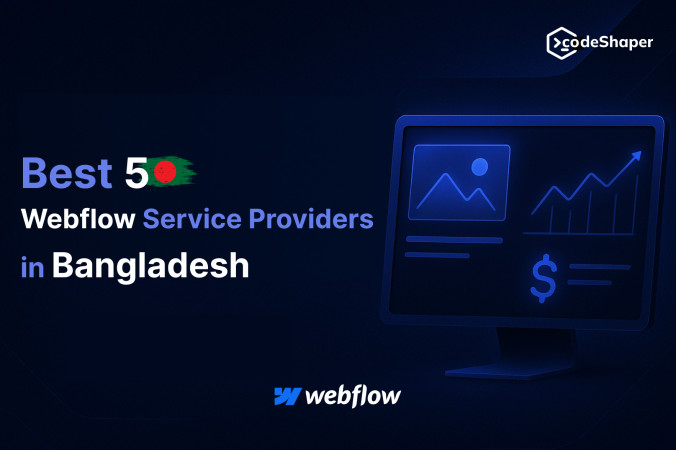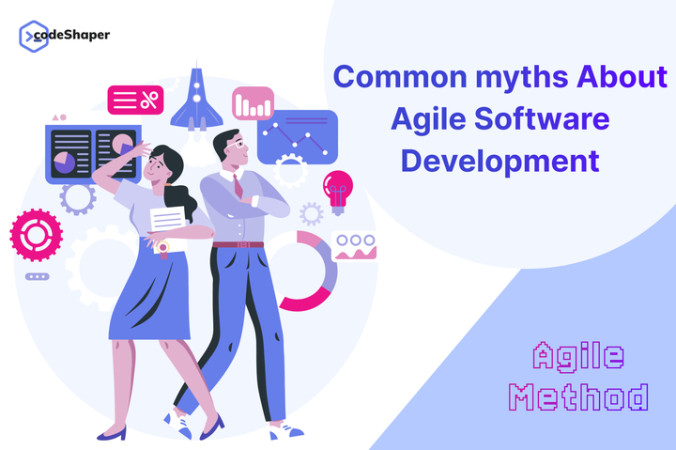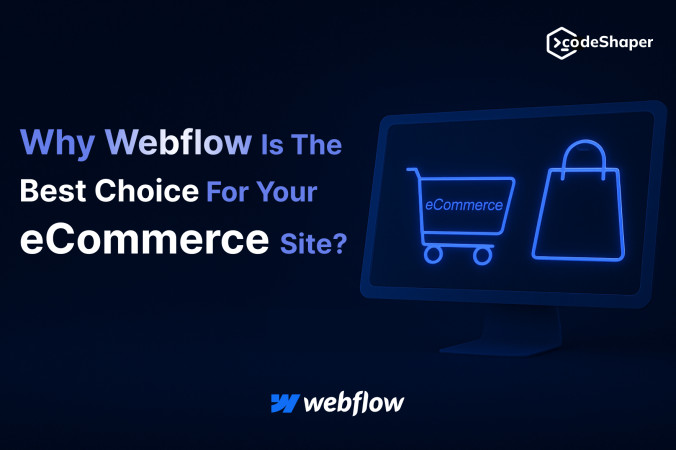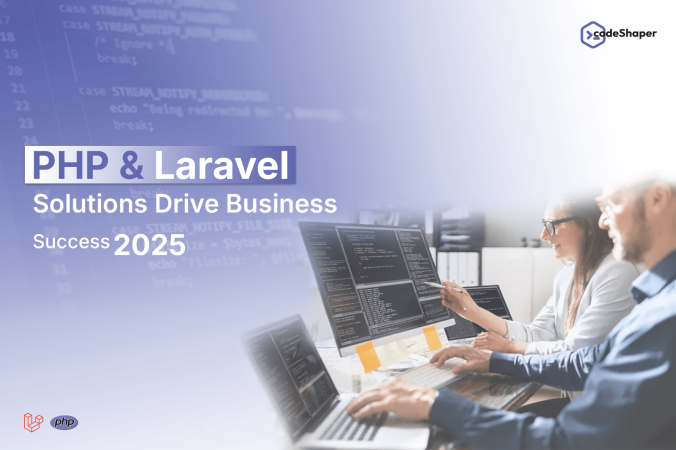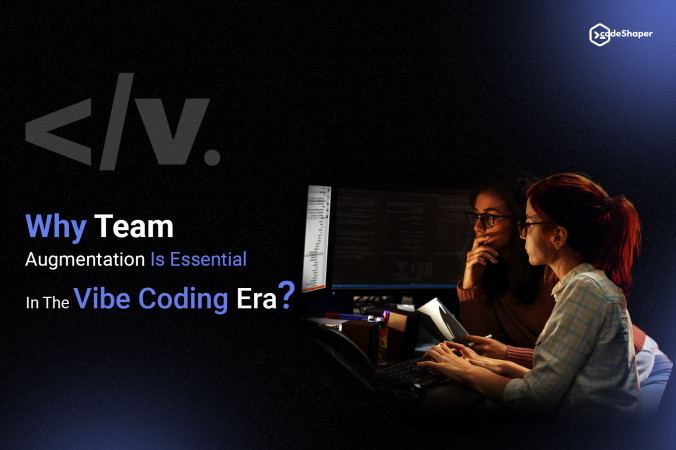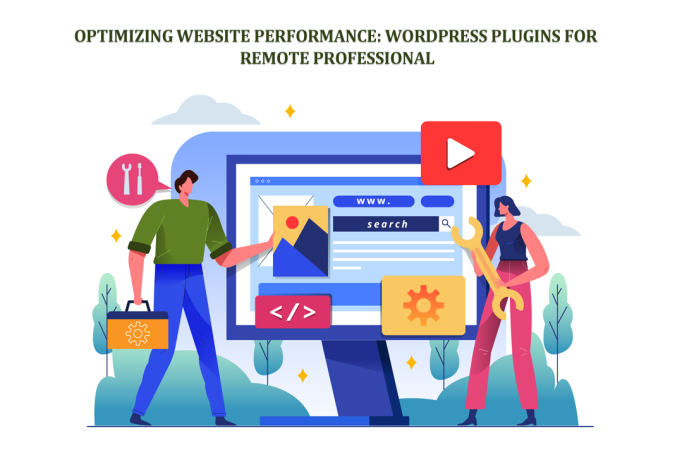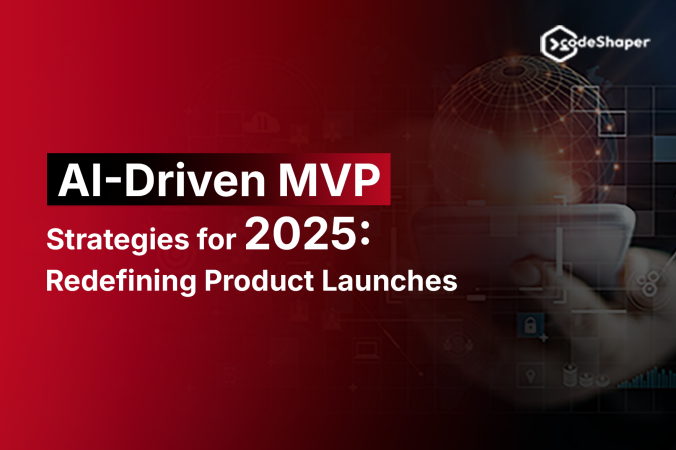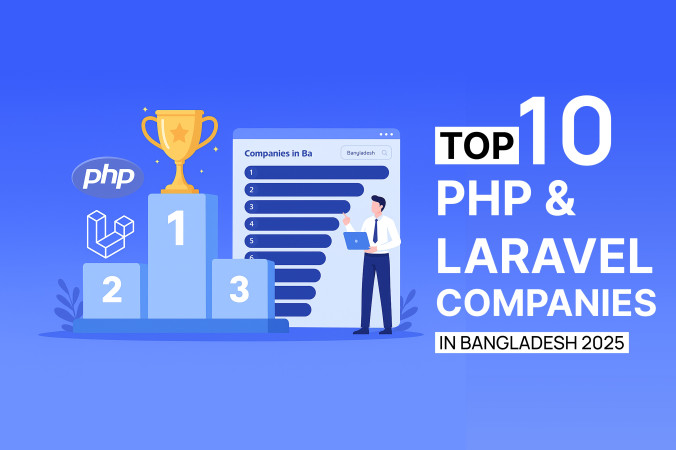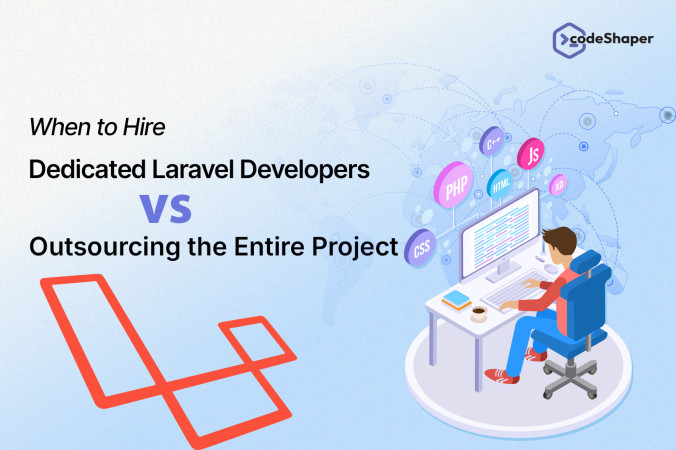Launching a SaaS MVP is one of the most exciting experiences for founders and developers. But let's be honest: developing software is difficult. You want to release something quickly, test your idea in the market, and leave the door open for future expansion.
This is where Laravel + Vue.js excel together. Those are an effective full-stack combination for quickly developing SaaS MVPs. Vue's reactive UI, built-in authorization systems, scalable architecture, and rich ecosystem complement Laravel's secure backend. Many startups and well-known businesses are choosing this stack to create SaaS MVPs fast, cost-effectively, and with confidence.
This guide explains its advantages, architecture patterns, real-world applications, and when this stack is the best fit.
What is an MVP in SaaS?
A Minimum Viable Product (MVP) is the simplest version of a product that focuses solely on the main idea, giving users its core value without adding extra features.
Imagine you’re building a SaaS project management project. Your MVP should include things like:
- User sign-up and login
- Project creation and task assignment
- Basic dashboard
- Subscription and billing
- A simple admin panel
You don’t need advanced reporting, AI features, or a marketplace yet. The MVP exists to test your idea with real users as quickly as possible.
Why does this matter? Because SaaS founders often waste months or years building features nobody asked for. An MVP helps you validate your idea before burning cash and time.
Related: How to plan an MVP?
What Makes a Good SaaS MVP?
Before choosing the tech stack, you need to understand what truly defines a successful MVP. A SaaS MVP isn’t just a basic version of your product; it’s a strategic launch that helps you validate demand, attract early customers, and secure revenue or investment with minimal risk.
To do that effectively, your MVP needs several core qualities:
1. Speed to Market
In the business world, timing can decide whether your product wins or disappears. A strong MVP should allow you to launch quickly, gather real user feedback, and iterate fast. The goal isn’t perfection, but to build fast with controlled cost and effort.
2. Low Development Cost
Founders want to validate their ideas without overspending. An effective SaaS MVP should minimize upfront investment while still delivering a stable, functional product.
3. Scalability from the Beginning
Even an MVP should be built with growth in mind. A scalable architecture ensures that as your first 100 users grow to 10,000, your platform stays fast, stable, and secure. That means,
Efficient database structure:
- Proper API design
- Support for queues, caching, and load handling
Choosing technologies that handle scaling natively saves you from expensive refactoring down the road.
4. Extensibility for Future Features
MVP is the foundation, not the final product. It must be flexible enough to support new features like team management, analytics dashboards, subscription plans, integrations, and automation.
5. Strong Security Standards
SaaS apps handle sensitive data, user accounts, payments, team access, and business operations. Even at the MVP stage, your product needs strong security.
- Secure authentication
- Role-based permissions
- Input validation
- Protection against common attacks
6. Developer Availability & Ecosystem Support
A great SaaS MVP is built on technologies that are easy to hire for now and in the future. Founders should choose a stack backed by:
- A large talent pool
- Active community support
- Rich documentation
- Abundant ready-made packages and UI components
This ensures your project can scale smoothly, even if your team changes or you need to grow quickly.
Using the wrong tech stack can hold you back by causing delays, extra costs, and performance issues.
Such as:
- Long setup times
- Higher developer costs
- Poor performance
- Security holes
That’s why choosing the right stack from the start is critical.
What is Laravel?
Laravel is a popular PHP-based backend framework. If you’ve ever heard that PHP is outdated, forget it. Laravel has completely modernized it.
Laravel offers:
- Authentication out of the box
- Database management with Eloquent ORM
- Queue system for background jobs
- Blade templating engine
- API support for connecting with your frontend or mobile apps
The beauty of Laravel is its elegant syntax and developer-friendly design. It makes common tasks like authentication, email sending, and caching super easy.
What is Vue.js?
Vue.js is a frontend framework for building user interfaces. It’s called a progressive framework because you can begin with basic features and gradually expand them into a complete application.
Vue offers:
- Reactive components that update instantly
- Simple learning curve
- Compared to Angular or React
- Vue Router for page navigation
- Pinia/Vuex for managing app state
- Integration with Laravel out of the box
Vue is popular because it’s simple, flexible, and developer-friendly. If React seems too large and Angular too complex, Vue is often the easier middle ground.
Related: How Our PHP and Laravel Solutions Drive Business Success in 2025
Why Laravel Is Perfect for SaaS MVP Backends?
Laravel is popular for backend development due to its simple, elegant syntax and powerful built-in tools, including authentication, caching, and database management. Its robust ecosystem and extensive package offerings enable developers to create quick, secure, and scalable applications. So, Laravel and Vue make a strong combo for many SaaS MVPs, but you should evaluate based on your project needs.
Here are some reasons it is popular:
1. Built-in Authentication & User Management
Jetstream, Breeze, Fortify
2. Subscription Billing Made Easy
Laravel Cashier (Stripe, Paddle)
Trials, discount codes, metered billing
3. Multitenancy & API-first Architecture
SaaS-ready patterns
Sanctum / Passport
4. Queue, Jobs & Scaling
Redis, Horizon
Efficient async processing
5. Security + Compliance
CSRF, hashing, request validation
6. Blade Templates
Laravel uses Blade, a templating engine that speeds up page load and is easier to manage.
However, Laravel provides tools for testing applications to ensure everything works correctly before going live.
Why Vue.js Complements Laravel for SaaS Frontends?
Vue.js is a JavaScript framework used for building websites and apps. It is simple, fast, and flexible.
1. Reactive, fast UI for dashboards
2. Component-based architecture
3. Works smoothly with Laravel via Vite
4. Real-time dashboards using Echo with WebSockets
5. State management (Pinia) for SaaS dashboards
6. Growing Community
However, Vue has many users and tutorials. Developers can find help easily when building projects.
Is Laravel good for SaaS MVP Development?
For SaaS MVP development, Laravel is an excellent choice because it offers built-in features such as authentication, billing integrations, and database management, which accelerate development. Its clean architecture and rich ecosystem allow startups to launch quickly while keeping costs low.
With scalability, strong security, and a large developer community, Laravel ensures your MVP can grow seamlessly into a full-featured SaaS product. In short, using Laravel and Vue together is the perfect combo for full-stack development. Here’s why:
1. Strong Community Support
Many Laravel users also use Vue. They work well together, and there are many tutorials and packages to help.
2. Good Documentation
Both frameworks have clear guides. Developers can learn and solve problems easily.
3. Lots of Online Resources
Websites like Laracasts offer lessons and examples for Laravel and Vue. This makes it easier to learn and build projects.
4. Easy to Use
Using Laravel with Vue speeds up development and keeps projects easy to get started with and manage over time. It is easy to start a project and maintain it later.
5. Why Laravel And Vue are a Perfect Pair for SaaS MVPs
Laravel and Vue complement each other perfectly. Laravel handles the backend, and Vue handles the frontend, making them the perfect tech stack for SaaS MVPs.
Why is Laravel with Vue.js an Ideal combination for saas and MVPS development?
According to Statistica, Laravel and Vue.js rank among the top 10 web frameworks worldwide. Laravel includes ready-made tools like Jetstream and Breeze for login, registration, email verification, and two-factor authentication.
On the other hand, Vue has reusable components that speed up the connection of dashboards, charts, and forms.
So, assembling a Laravel and Vue.js development team is a smart choice for building high-quality SaaS MVPs for your business
Cost-Effective
Laravel and Vue are both open-source and supported by large communities. You save money because of no license fees.
- Lots of free packages and templates.
- Easier to find affordable developers.
Scalability
Your MVP should grow with you. Laravel supports scaling through microservices, caching, and cloud deployment—Vue scales with component-based architecture and SSR.
Security
Laravel helps protect applications from SQL injection, XSS, CSRF, and other security threats. Vue sanitizes data automatically. This makes your SaaS secure by default.
Trusted By Developers
Laravel and Vue are known for being developer-friendly. When developers are happy, development is quicker, and there are fewer bugs.
Related: Top 10 PHP/Laravel Companies in Bangladesh 2025
Laravel and Vue Architecture: How They Work Together?
SaaS founders often choose Laravel + Vue not just because they’re popular—but because the architecture itself is clean, scalable, and predictable, making it ideal for building MVPs that can grow into full SaaS platforms.
1. Laravel handles core application (MVC) logic.
2. Laravel plays a vital role in development Architecture. Such as:
- Models → database layer (Users, Subscriptions, Teams, Billing)
- Controllers → API endpoints, authentication, data processing
- Services or Events → background workflows like onboarding emails, subscription sync, weekly reports
- Policies & Middleware→ access control, rate limiting, tenant isolation
That predictable structure ensures that even when you scale to tens of thousands of users, your code remains maintainable.
3. Vue Handles the Frontend Interactions (SPA or Hybrid inertia.js)
4. Hybrid App with Inertia.js for Better SEO.
5. Laravel API-First Backend for SaaS: such as REST APIs or GraphQL, which allows adding a mobile app later.
6. Real-Time Features with Laravel (Echo + Vue) for modern SaaS development.
7. Laravel offers secure Authentication & Authorization Flow.
8. Add an architecture diagram to boost SEO rankings.
Those Laravel with Vue positions ensure a future-ready stack for MVPs that need to grow into full SaaS platforms.
Key Features Every SaaS MVP Needs
We're all aware that SaaS adoption is widespread. According to a recent survey, the global SaaS market is expected to grow to around $1.23 trillion by 2032. Meanwhile, by 2025, 85% of all business applications will be SaaS-based. So, it's time to learn about the SaaS features your MVPs must have.
Authentication & Onboarding
Laravel Jetstream provides secure login, registration, and two-factor authentication.
Vue can make signup forms interactive with instant validation.
Subscription & Billing
Laravel Cashier integrates with Stripe or Paddle for subscriptions.
Vue makes subscription management dashboards dynamic and easy to use.
Dashboard
Laravel provides APIs for metrics and data.
Vue displays data with charts, tables, and visualizations.
Notifications & Real-Time Updates
Laravel Echo and WebSockets enable real-time updates.
Vue instantly re-renders the UI for a smooth experience.
Admin Panel
Laravel Nova or Voyager provides ready-made admin dashboards.
Vue enhances these dashboards with modern UI interactions.
Real-World SaaS Examples
Several SaaS products have successfully used Laravel or Vue in production:
- Fathom Analytics uses Laravel for a fast and reliable backend.
- Laravel Spark is a boilerplate for SaaS apps with subscriptions.
- Using Laravel + Vue reduced Acculance SaaS development time by 30%.
The fact that Laravel offers official SaaS starter kits shows how well-suited it is for this use case.
Comparing Laravel and Vue with Other Stacks
Laravel and Vue vs MERN
MERN is powerful but requires significant setup. In contrast, Laravel combined with Vue offers opinionated defaults, making it faster and easier to build MVPs.
Laravel and Vue vs Django and React
Django is powerful, but finding Python developers can be challenging. Laravel, on the other hand, is more popular for building web apps with subscription models.
Laravel and Vue vs Ruby on Rails
Rails used to be the MVP king, but Laravel has now taken the crown in terms of popularity and ecosystem.
Growing Your SaaS Beyond the MVP
Once your MVP is live and validated, you’ll want to scale.
Laravel and Vue grow with you:
- Performance: use caching, queues, and code-splitting.
- Security: built-in safeguards for enterprise use.
- Deployment: deploy easily with Laravel Forge or serverless with Laravel Vapor.
- Team Growth: Laravel and Vue follow conventions that make onboarding new developers smooth.
When to Avoid Laravel And Vue
Laravel and Vue.js are a powerful combination for most SaaS MVPs, but like any stack, they’re not the perfect fit for every product. Understanding the limitations helps you to choose a stack that aligns with their long-term technical and business goals.
1. Ultra-Heavy Real-Time Applications
2. When You Need a Pure Microservices or Event-Driven Architecture
3. AI/ML-Heavy MVP Applications
4. Mobile-First Products Requiring Native Features
5. Ultra-High Concurrency
6. SEO-Critical Platforms Requiring Full Server-Side Rendering
7. Very Large, Complex Frontends with Deep State Management
8. Projects Requiring Extremely Lean Server Resource Usage
Related: Minimal Viable Product (MVP) in Software Development: A Step-by-Step Guide
Step-by-Step: How to Start Your SaaS MVP with Laravel and Vue
1. Install Laravel and set up Breeze.
2. Add Vue & Vite
3. Build Auth Modules
4. Create a role-based permission system
5. Build dashboard UI
6. Integrate billing with Stripe and Cashier
7. Add team management
8. Deploy via Forge, Vapor, or Docker
9. Add monitoring with logs.
If you want to move even faster, consider using a Laravel SaaS boilerplate to skip repetitive setup.
Performance Optimization Tips
A fast SaaS MVP improves user retention and helps your site rank better.
Here are practical performance tips:
1. Use Caching for Speed (Redis and Route)
This reduces response time significantly for SaaS dashboards and APIs.
2. Vue Lazy-Loading for Faster Initial Load
This lowers bundle size and speeds up initial page rendering.
3. Optimize Database
Clean database queries mean faster API responses.
4. Use Queues with Job Batching
Job batching reduces worker load and keeps the app responsive during peak traffic.
5. Compress & Optimize Images
This improves page speed across the entire frontend.
6. Code Splitting with Tree Shaking in Vue
So, Users only download what they need, reducing load times.
Conclusion
When building a SaaS MVP, your tech stack determines how fast you move, how much you spend, and how easily you can scale.
For founders and developers who want to launch a SaaS MVP that’s both quick and future-proof, Laravel and Vue are hard to beat.
Need a Laravel + Vue team to build your SaaS MVP?
Contact us for a free consultation!
FAQ:
# Q: When should Laravel be used?
A: Laravel should be used when you need to build secure, scalable, and feature-rich web applications quickly and efficiently. It’s ideal for projects like SaaS platforms, e-commerce sites, and enterprise apps that require robust backend functionality, clean architecture, and long-term maintainability.
# Q: Can we build large-scale applications with Laravel and Vue.js?
A: Laravel and Vue.js are ideal for developing large-scale applications due to their scalability, modular architecture, and robust ecosystems. Laravel handles complex backend operations, while Vue offers a reactive, component-based frontend that is simple to maintain and scale as your application grows.
# Q: Is Laravel scalable and good for enterprise applications?
A: Laravel is highly scalable and ideal for enterprise applications due to its robust architecture, built-in caching, and microservices support. Its advanced features, such as queue management and database optimization, help businesses manage high traffic and complex workflows with ease.
# Q: How do you find the right developer team for SaaS MVPs?
A: Finding the right developer team for a SaaS MVP begins with selecting experts in rapid prototyping and a scalable tech stack, such as Laravel and Vue.js. Look for a team that has a strong portfolio, effective communication skills, and a track record of delivering secure, high-performing SaaS products on time.


